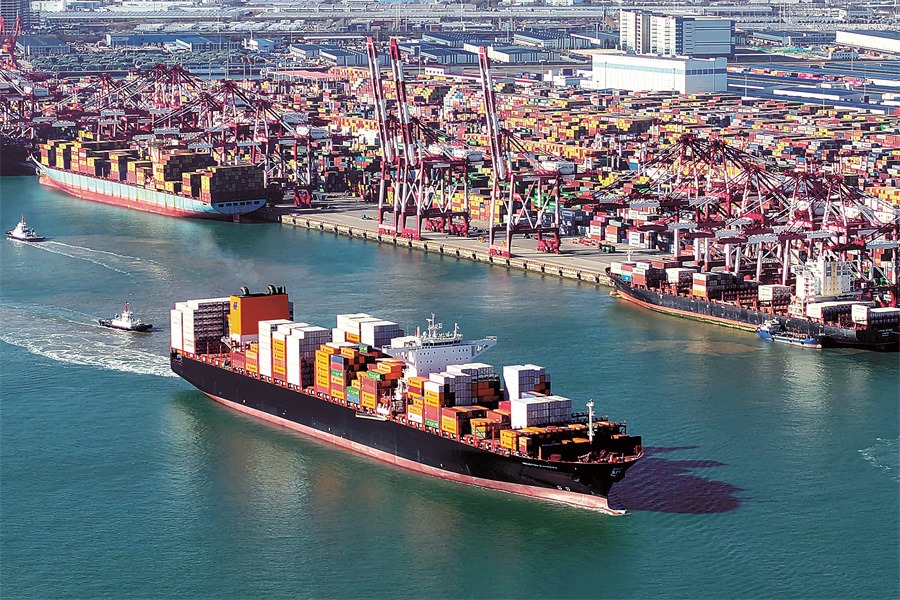Bull taken by the horns
China is taking action to cut the greenhouse gas emissions in its agri-food system

China is taking action to cut the greenhouse gas emissions in its agri-food system

In previous years, agriculture and the food system might not have been a topic of much concern or debate, but the presence of not one, but three Food and Agriculture Pavilions at the 27th session of the Conference of the Parties (COP 27) demonstrated that things have changed. The relevance of agriculture and the food system to the global fight against climate change is becoming one of the most widely recognized issues in international environmental diplomacy. This was also the case true at COP 15 in Montreal, Canada, with the Global Biodiversity Outlook published by the Secretariat of the Convention on Biodiversity arguing that agricultural systems are key to protecting biodiversity. The importance of the agri-food system as a driver of human impact on the environment is clearly in the spotlight and needs to be examined.
The race is on to show leadership in this important area of work, and China already has many of the foundations for success in place. A new study by innovative Green Development Program (iGDP), a Beijing-based non-profit consultancy, shows that with enhancements to existing policies, China could meaningfully reduce greenhouse gas emissions from its agri-food system. The key, as always, is digging into the system to figure out where the emissions are coming from, and what the right intervention points are.
The agri-food system refers to more than just farming. It includes agricultural production, food processing, packaging, transport, retail and food consumption — all of which are closely linked to climate change. Climate-induced changes in temperature and precipitation could exacerbate the volatility of agricultural production, and many activities in the agri-food system are sources of greenhouse gas emissions. According to the Intergovernmental Panel on Climate Change's Sixth Assessment Report, global GHG emissions from the agricultural sector, including land use, accounted for between 13 percent and 21 percent of total global emissions from 2010 to 2019. However, when considering the whole agri-food system including GHG emissions from food processing, packaging, transport, retail and consumption, these food-related GHG emissions account for one-third of global GHG emissions, meaning the system is pivotal to global climate safety. Research out of Oxford shows that the continued growth of food system emissions could derail progress toward the 1.5 C and 2 C climate targets, even if all current fossil fuel emissions were halted.
Ongoing social and policy changes have been reshaping China's agri-food system, including the growing consumption of animal-sourced protein, the rise of food delivery services, the development of extensive cold chain logistics systems, and the passage of anti-food waste laws. iGDP analysis shows that GHG emissions from China's agri-food system were around 1.6 billion tons of carbon dioxide equivalent in 2019 and would continue to grow without further policy intervention. The largest source of these emissions is agricultural production — CO2 is produced by on-farm energy consumption, N2O (Nitrous oxide) from excessive use of nitrogen fertilizer, and CH4(methane) from enteric fermentation (digestion of grass in the stomachs of ruminant animals such as cows) and manure management in livestock production. The GHG growth is mainly attributed to CH4 and N2O emissions while CO2 emissions could decline after 2030.
Fortunately, GHG mitigation in the agri-food system plays an important role in China's carbon peaking and carbon neutrality strategies. China's updated NDC (China's Achievements, New Goals and New Measures for Nationally Determined Contributions) emphasizes many GHG mitigation measures for the agri-food system, including the reduction of fertilizer use, ecosystem carbon sinks, and waste resource utilization.
iGDP research shows that many of the green and low-carbon policy practices which China is already implementing can achieve multiple social and economic goals while helping to mitigate the effects of climate change. These policy actions include the improvement of productivity in agriculture to conserve land, reduction in the use of chemical fertilizers and pesticides to maintain soil quality, the promotion of green agricultural machinery to abate air pollution, and improved manure management to protect water quality. iGDP estimates that improvements to existing green policies such as these could reduce GHG emissions from the agri-food system by 60 percent in 2050 compared to the 2019 level.
To reduce material use and promote the effective utilization of resources, China has implemented a series of policies aimed at developing a circular economy. Policies to improve efficiency in the energy sector and actions to reduce packaging materials and food waste can also contribute to reductions of GHG emissions in the agri-food system. One such example is cooking energy saving and electrification.
Post-production actions, referring to actions affecting the stage after food has been produced, also have significant mitigation potential. Specific actions include the electrification of light-duty vehicles used in delivery and transportation, the use of recyclable packaging materials and the greater utilization of kitchen waste. The implementation and scaling-up of these actions require enhanced policy guidance and financial support. In addition, as the consumers of the products of the agri-food system, we all have a decisive influence on the scale and structure of food production and the way food is served, so promoting changes in consumer behavior is also important.
Going forward, to realize the full GHG mitigation potential of its agri-food system, China could consider developing a comprehensive carbon neutrality strategy for the agri-food system. As food production and consumption activities involve transportation, industry, waste and multiple agricultural sectors, a comprehensive climate change plan focusing on the agri-food system as a whole would provide a more systematic approach to GHG mitigation. Different parts of the agri-food chain are often overseen by different ministries, so a system like this would centralize information, allowing strategic policy coordination across different parts of the system, and promoting the participation of a wider range of stakeholders.
Chinese policymakers are aware of many of these issues. The emphasis on the concept of an ecological civilization and the commitment of China's leadership to the targets of carbon peaking before 2030 and carbon neutrality before 2060 mean that environmentally positive changes to the agri-food system are on a sure footing. With a comprehensive strategy, China's agri-food system will be able not only to cope with climate change but ensure food security, rural development and biodiversity protection, as well as preserve the natural environment and maintain public health.
Chen Meian is a senior analyst at innovative Green Development Program. Yefren Nye is communications assistant at innovative Green Development Program. Hu Min is principal and co-founder at innovative Green Development Program. The authors contributed this article to China Watch, a think tank powered by China Daily.
Contact the editor at editor@chinawatch.cn.































